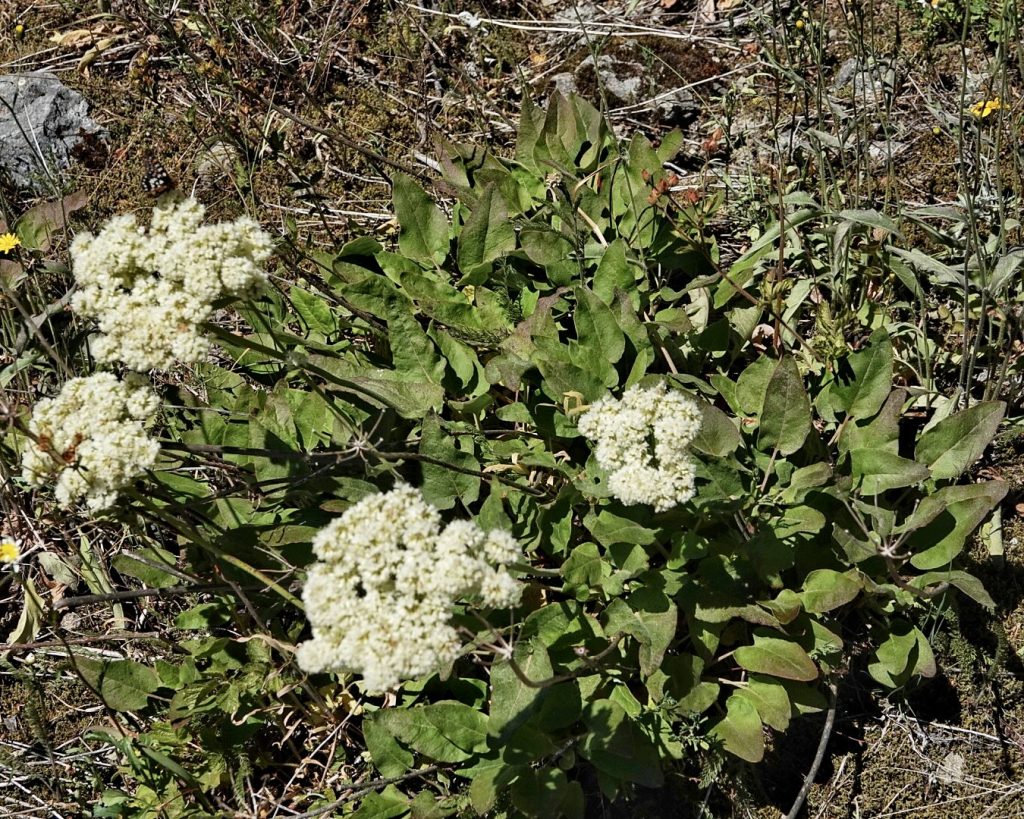
This member of the family Polygonaceae goes by the common names of arrowleaf buckwheat, heartleaf buckwheat, and northern buckwheat, and it’s beauty is in its functionality, since it is not something that lights up a landscape with spectacular flowers (although I must admit I’ve never personally seen the variety with bright yellow flowers that I saw many photos of while researching this profile). But a closer look will usually reveal insect life, and perusal of the incomplete list below of animals that feed upon it provides testimony that this is an extremely valuable plant within the ecology of most of the aridlands environments it populates.
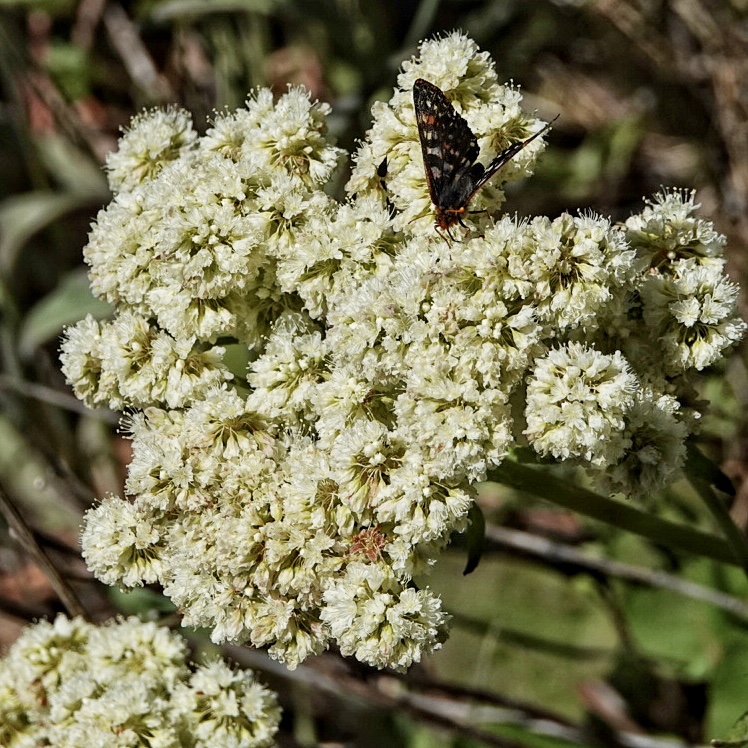
Our wild buckwheats in the genus Eriogonum are not the precursors of the cultivated buckwheats. Although they are in the same family, the cultivated buckwheats are in the genus Fagopyrum, a Eurasian native that is now planted worldwide, while Eriogonum sp. are native to North America. Indigenous cultures did roast and grind the seeds and roots of some Eriogonum sp. to use as flour for a food source, but I can find no information on that being the practice with Eriogonum compositum.
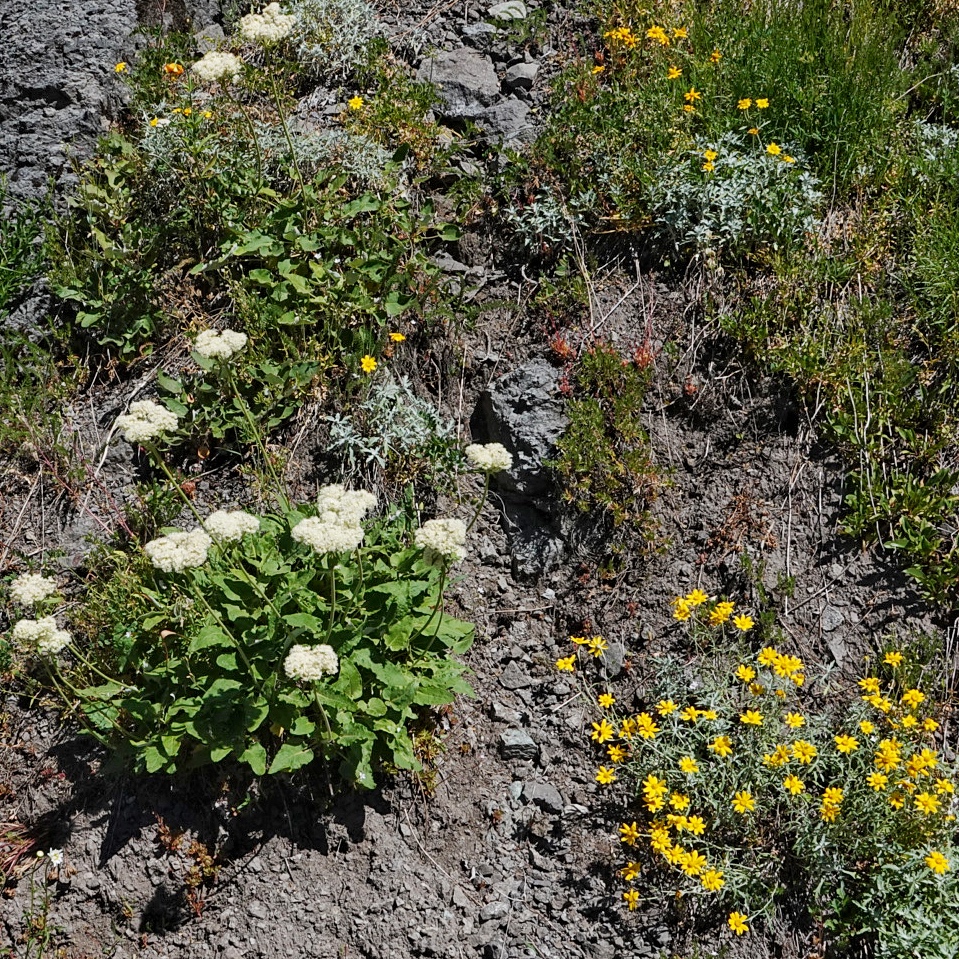
I do find records for its use in medicine. The indigenous peoples of the Columbia Basin made a decoctions of the roots and stems that they used to treat colds, diarrhea, and to wash infected wounds. They also placed a poultice of mashed leaves on wounds to promote healing. And children played a game where they broke off a dried stem and hooked the pedicels of the inflorescence together, and then pulled against each other to see whose broke first.
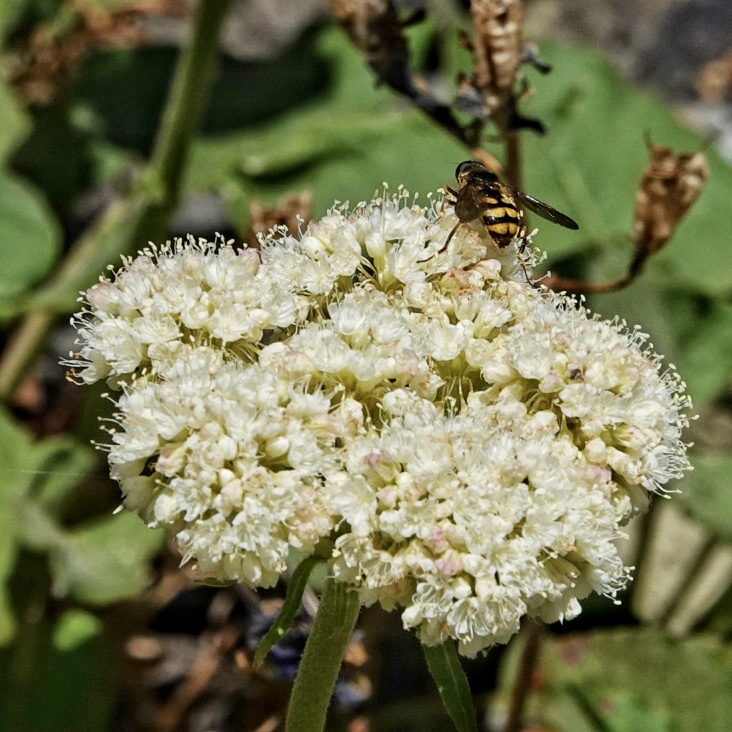
Description– Like most Eriogonum there is much variability; perennial plant with many basal leaves that are up to 8” long, spade to heart to arrow shaped, somewhat hairy but dark green on top, and densely wooly and greyish white below, and erect flower stems up to 20” tall with umbels of cream to yellow (sometimes pink with age) flowers; there are 3 intergrading varieties in our region that account for most of the variation in leaf morphology and flower color.
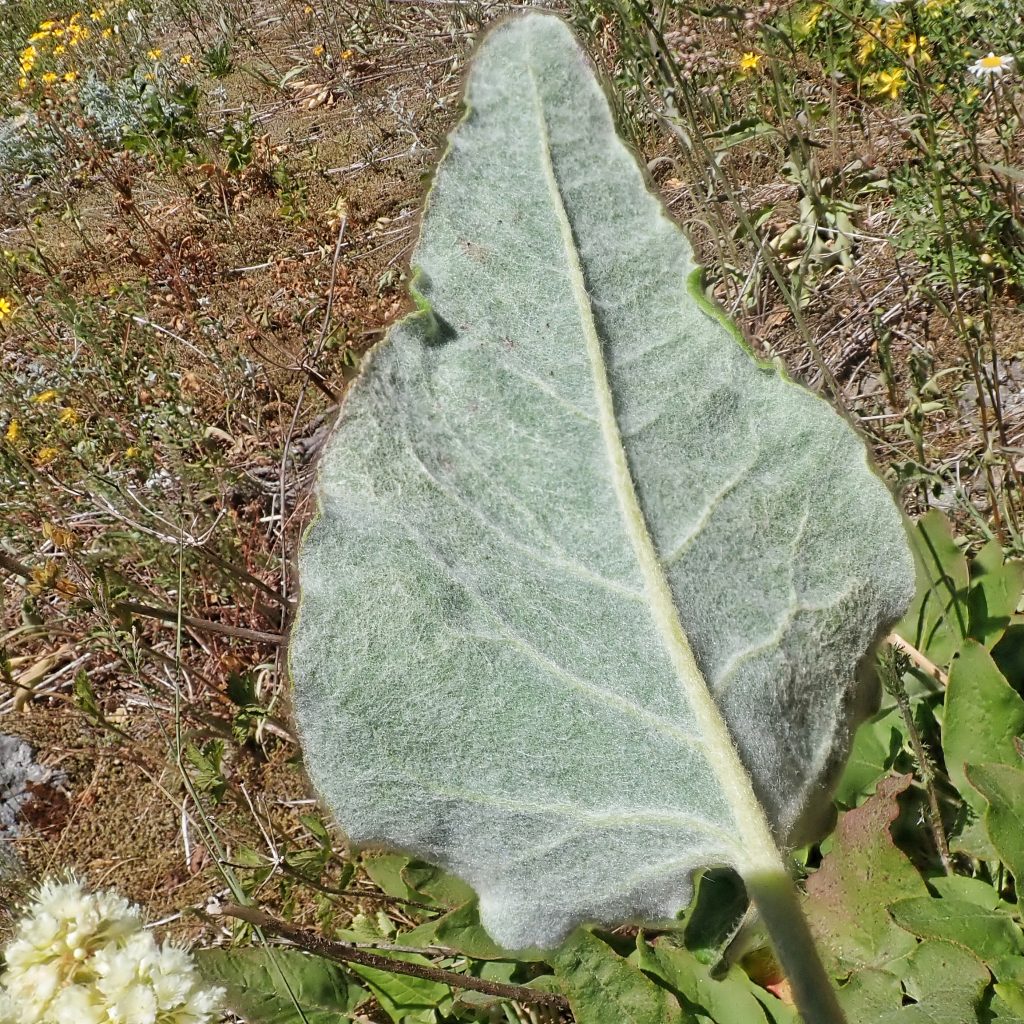
Similar species-There are a plethora of Eriogonum sp. in our region and most are best differentiated using a key; of the ones that have a very wooly ventral leaf surface and an umbelliferous inflorescence E. pyrolifolium, E. ovalifolium, E. umbellatum, and E. marifolium all have leaves shorter than 4cm, that are not cordate (heartshaped) or sagitate (arrow shaped, and the overall height is usually less than 12”.
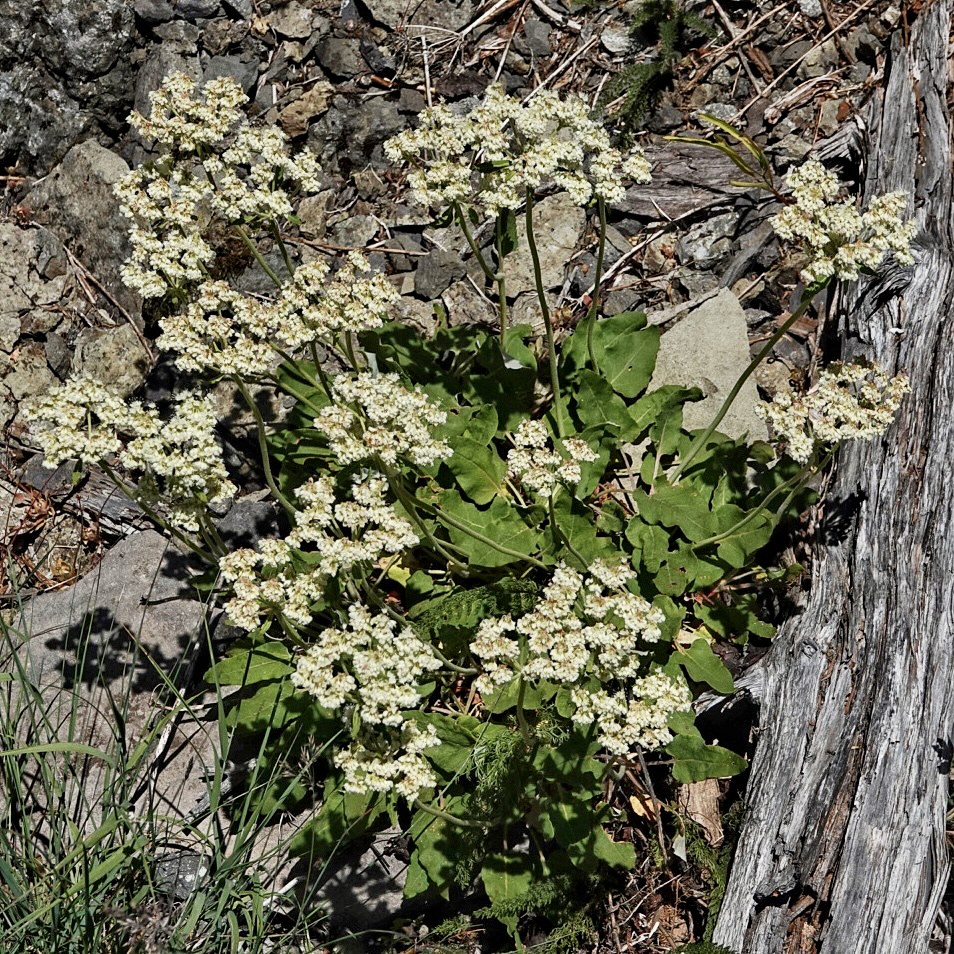
Habitat-Mesic to arid, well drained, open and rocky areas, up to 6600’ elevation.
Range-Northwestern US; primarily from the Cascades east to the west slope of the Rockies, and in the Columbia River Gorge and Rogue River watershed, in our region.
Reproductive timing– Blooms May through July
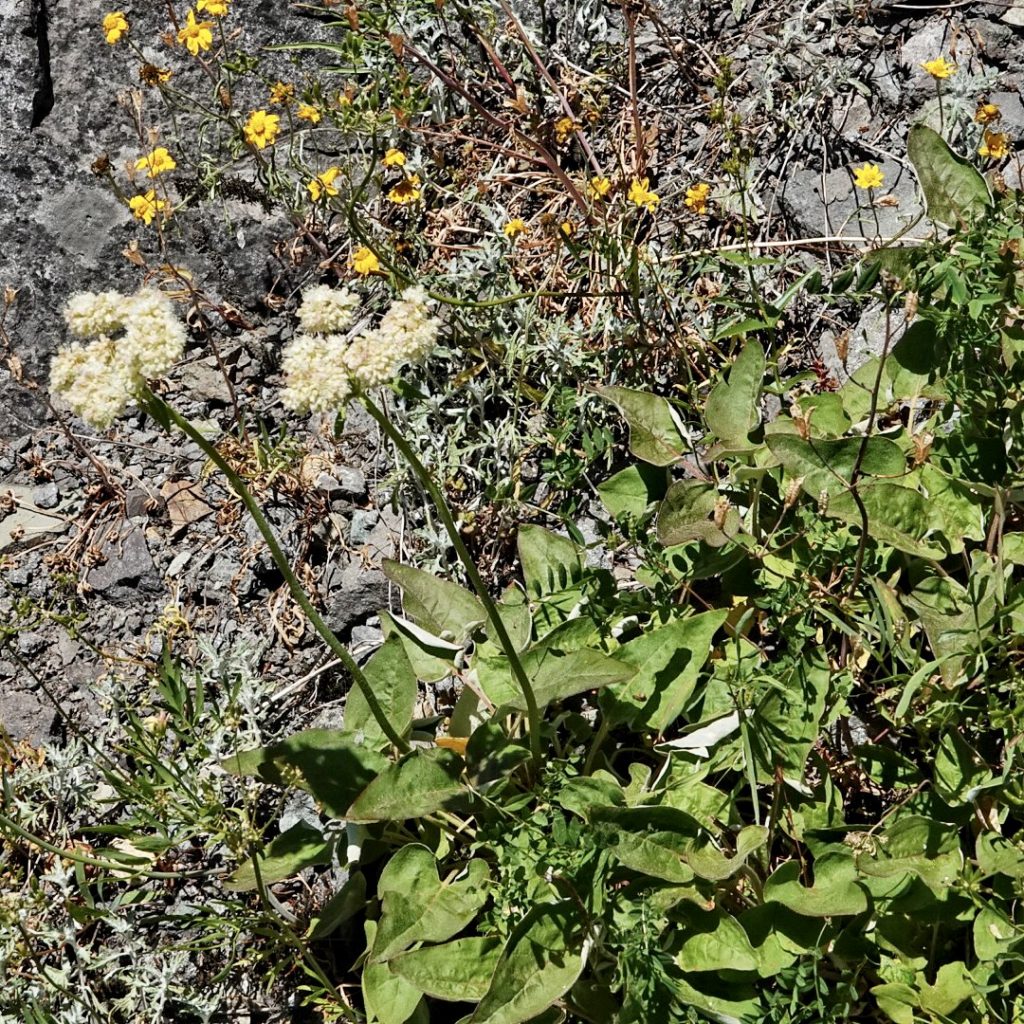
Eaten by-Larval host for the Lycaenid butterflies Euphilotes enoptes, E. columbiae, Icaricia acmon, Callophrys sheridanii and possibly othergreen hairstreaks, and the metalmark butterfly (Riodinidae) Apodemia mormo, as well as a few others; the clear wing moth (Sesiidae) Synanthedon polygoni, as well as some members of Gelechiidae (twirler moths) in the genus Chionodes; many other moths utilize Erigonum sp. as larval hosts, and probably use this one also; considering the large number of leaf beetle (Chrysomelidae) larvae and adults that are known to eat wild buckwheats there are bound to be some that utilize Eriogonum compositum, but I can find no documentation for that; the seeds are an important food source for birds and small mammals; a multitude of Hymenoptera, Coleoptera, and Diptera use its nectar and pollen.
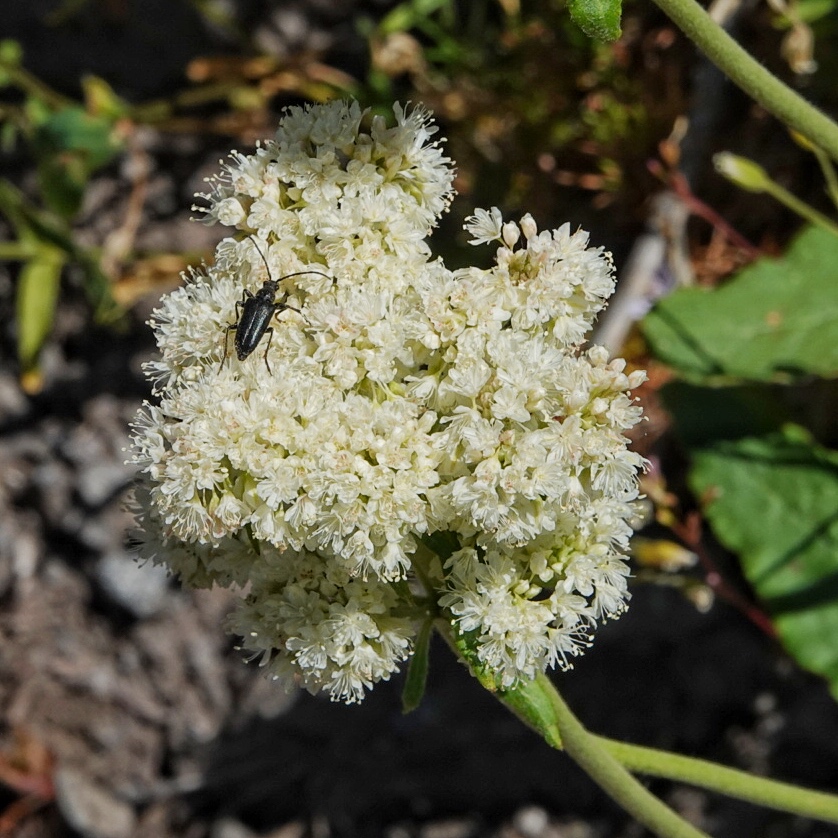
Etymology of names–Eriogonum is from the Greek for ‘wooly knees’, and came from the bent stems of the type species for this genus. The specific epithet compositum is Latin for ‘compound’, and probably refers to the inflorescence.
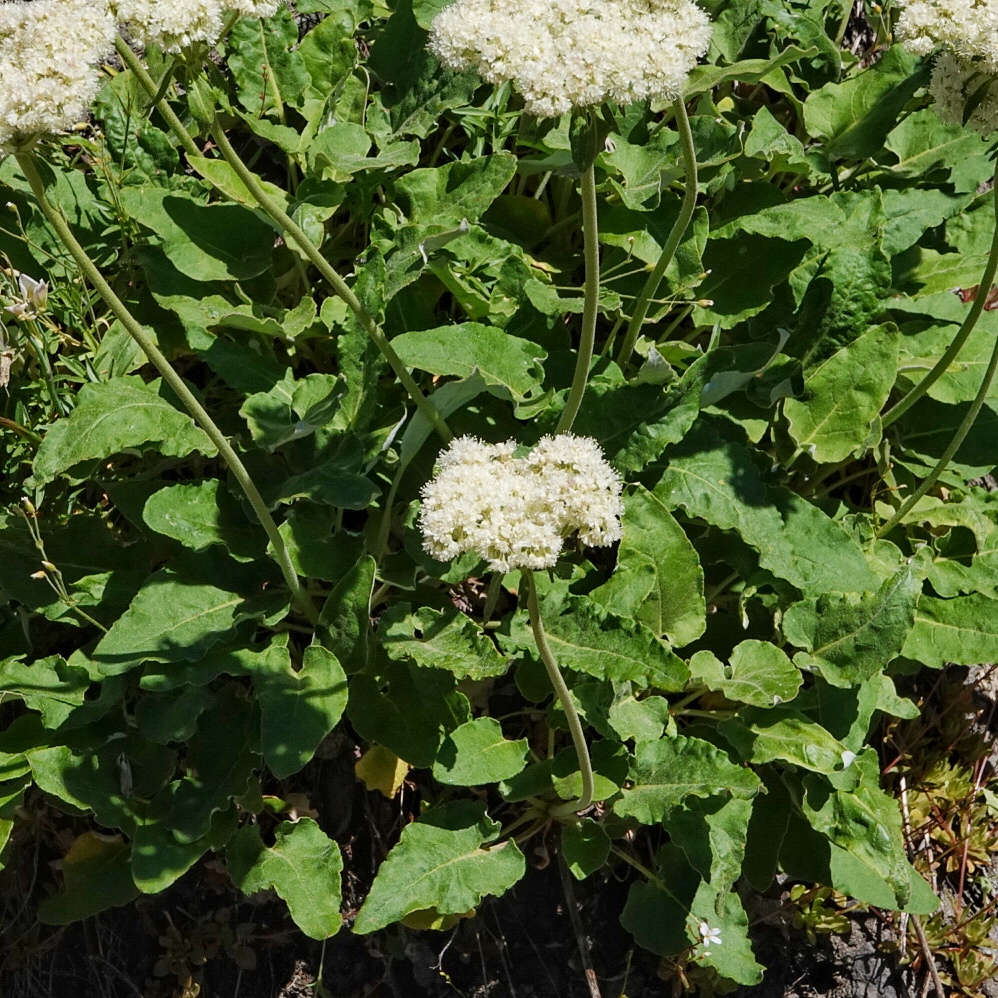
BRIT – Native American Ethnobotany Database
http://www.efloras.org/florataxon.aspx?flora_id=1&taxon_id=250060225
https://www.wildflower.org/plants/result.php?id_plant=ERCO12
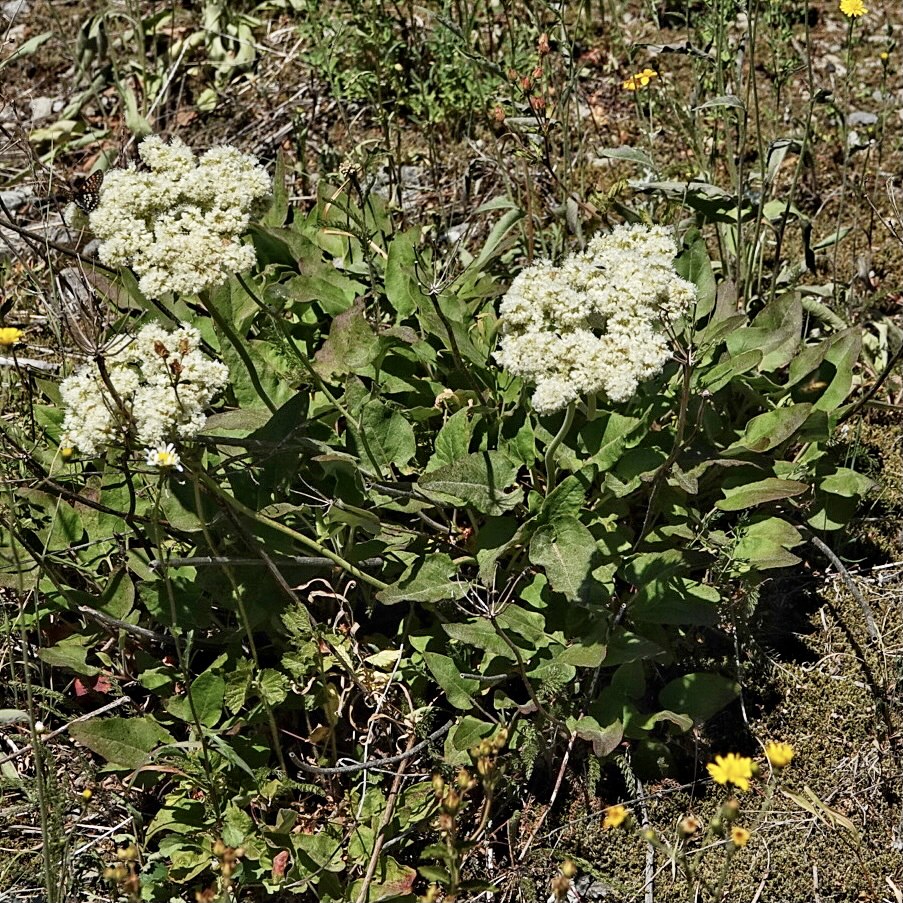
Thanks!!! Good article!! I am interested in Eriogonums…and are trying a few…here in Southern Oregon…from Kathy Allen who is propagating several… I love this particular variety and hope to add it to our native wild garden…
Leigh Blake
Thanks! I hope they do well for you!